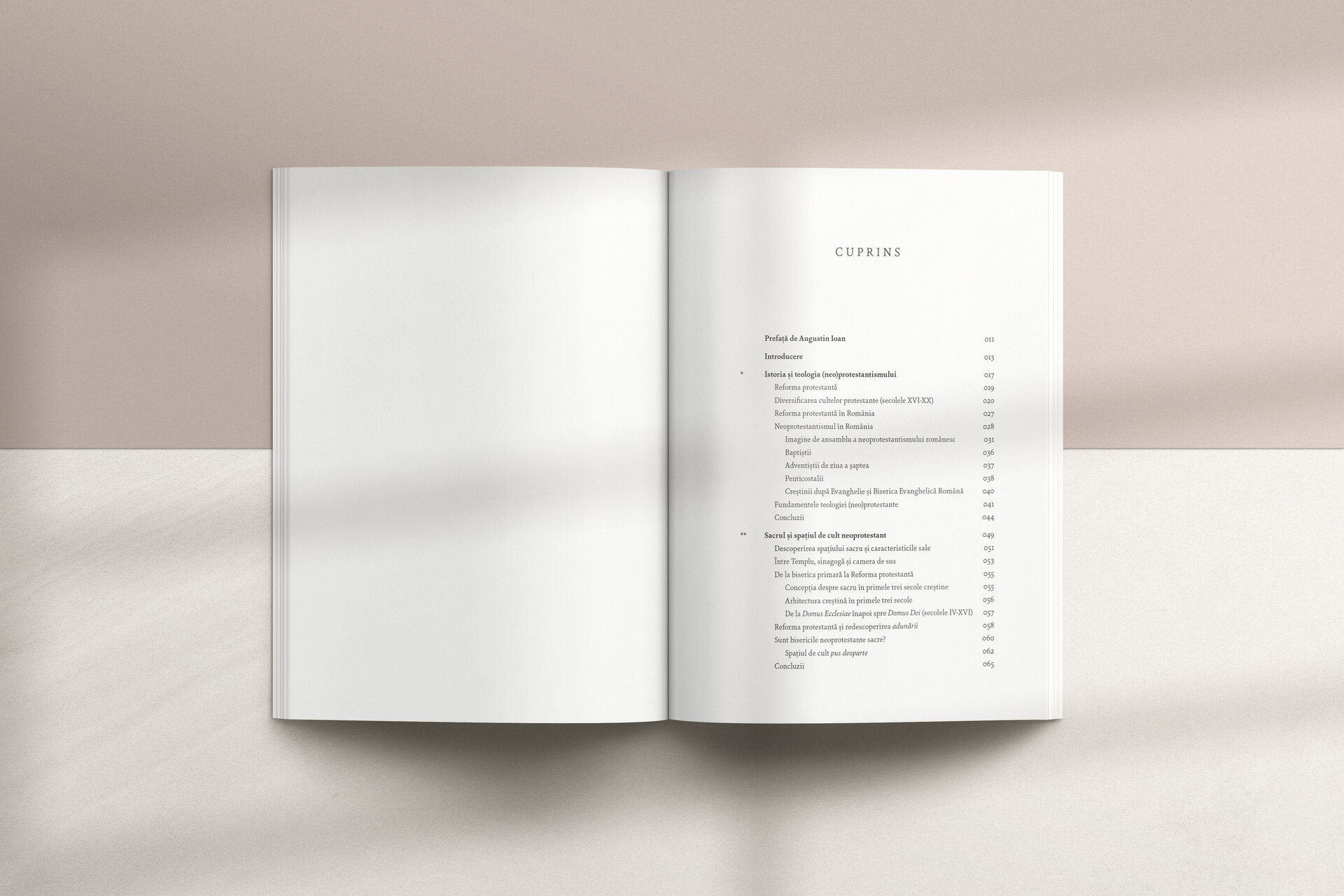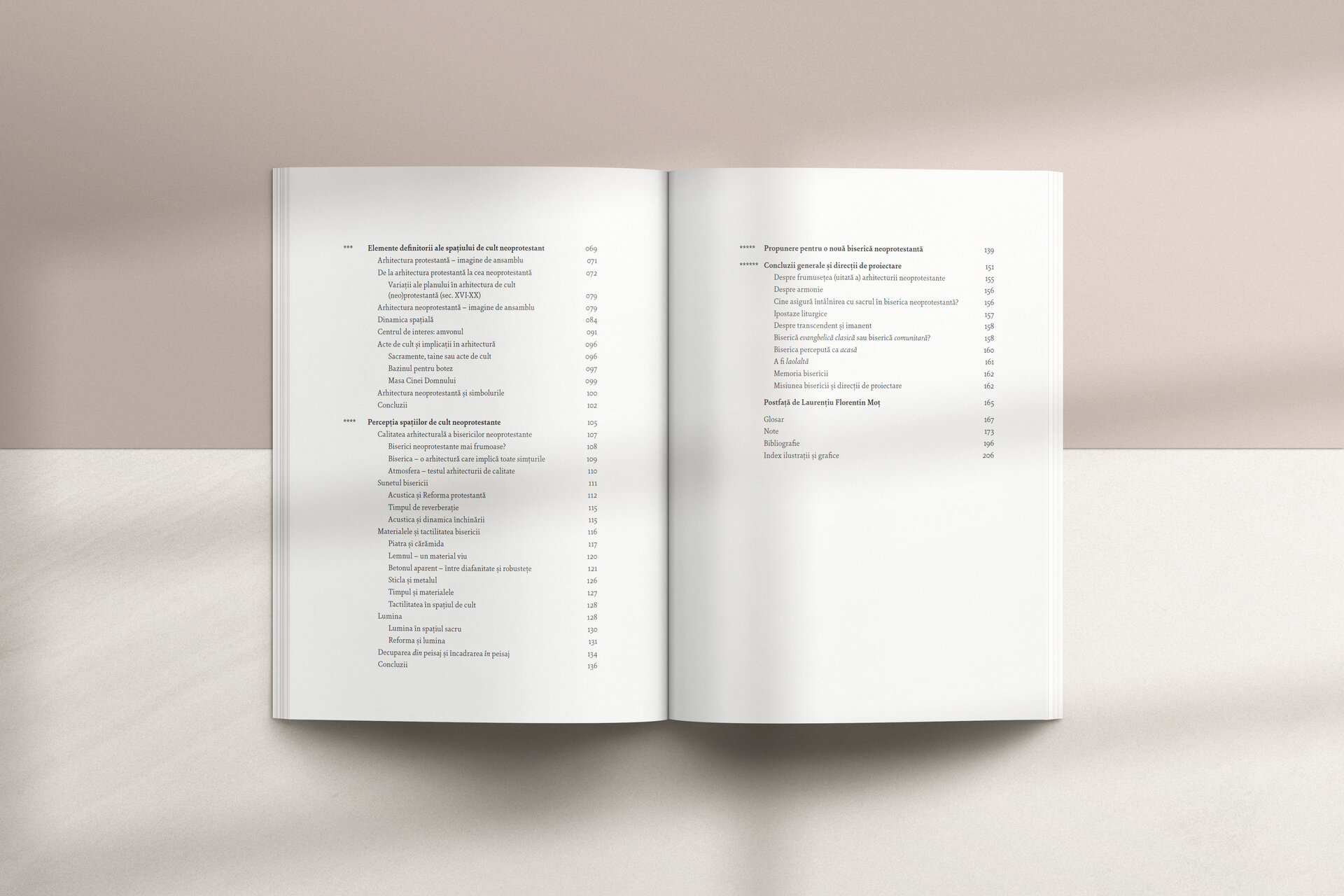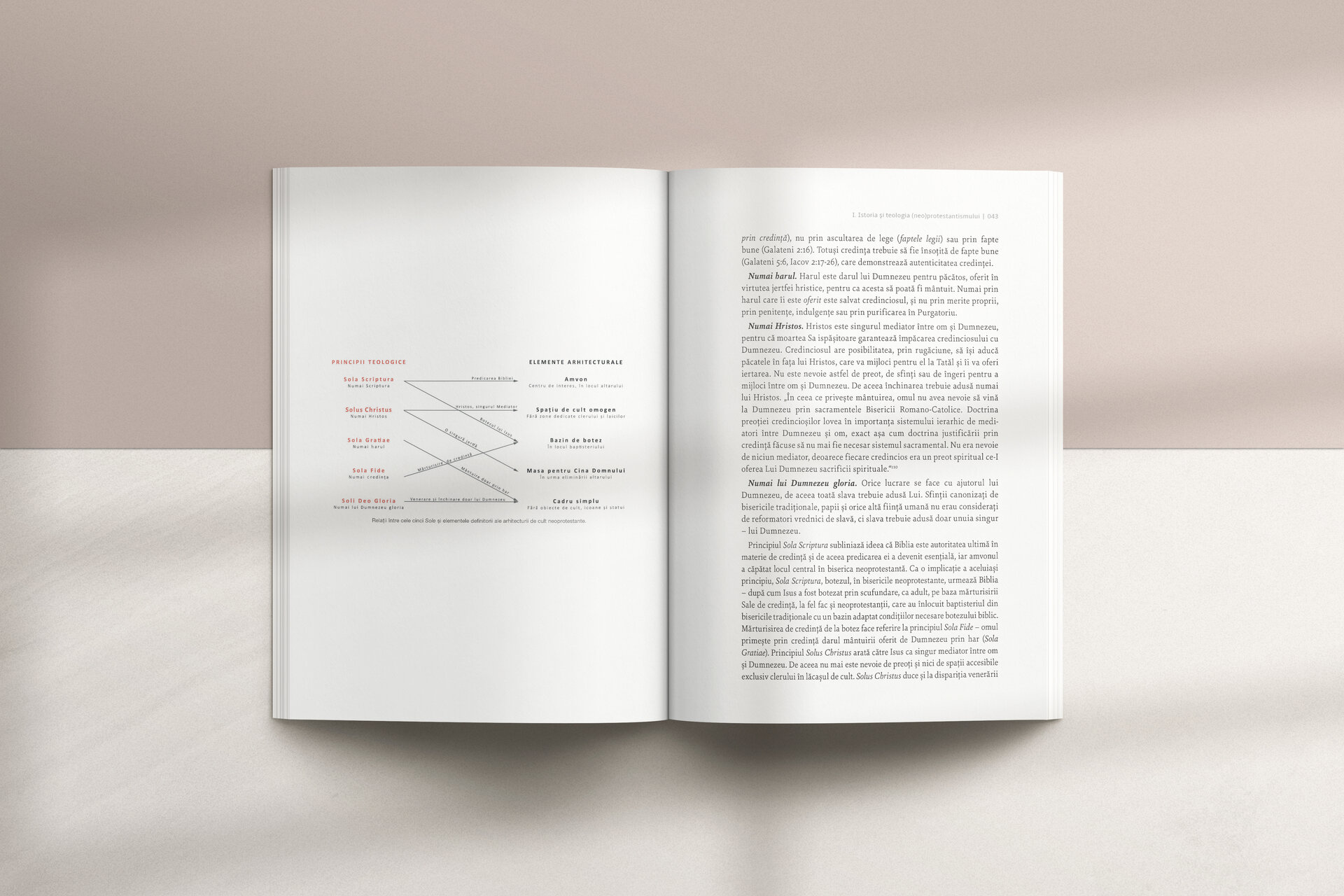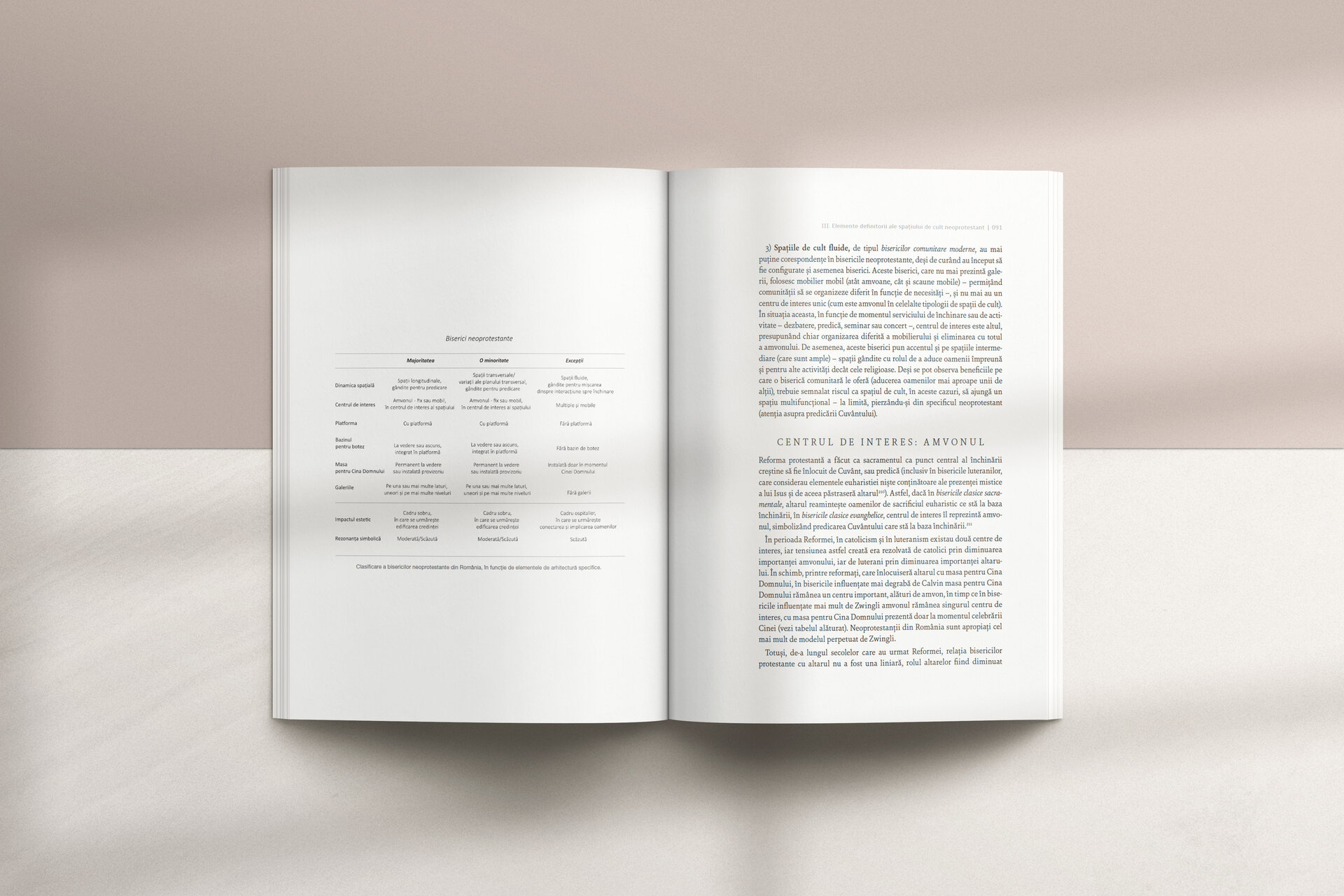
Set Apart. Evangelical Worship Space
Authors’ Comment
The history of Protestant worship spaces in the Western context has evolved in tandem with architectural thought, while still accommodating a constant heterogeneity. In contrast, the Neo-Protestant architectural landscape in Romania paints a different picture. Despite having over 6,500 Neo-Protestant churches, there’s a conspicuous absence of signature architectural styles. The dearth of indigenous specialized studies highlights the relatively brief history of Romanian Neo-Protestantism, which covers about 160 years. Of these, four decades were dominated by the communist regime. Despite a construction boom in the Neo-Protestant sector following 1989, no standout architectural marvels came to be.
To decipher the underlying causes of this situation and pinpoint principles that might steer future development in a different direction, a comprehensive examination of the factors molding Neo-Protestant architecture have held distinct implications within a predominantly Orthodox Romania. Over the past decades, this country has been navigating its way from a concealed spirituality towards a broader religious diversity, and from atheism towards secularism. Notably, there has also been a religious revival that many European nations might envy. Only by considering all these factors can one accurately appraise Neo-Protestant architecture in Romania.
This volume delves into the subject of Neo-Protestant architecture from various perspectives. Initially, it examines the historical context, emphasizing the importance of situating the Neo-Protestant movement within its broader historical, social, and cultural milieu. Following this is the hermeneutic angle, crucial for deciphering the involved theological concepts, comparatively analyzed in relation to various theological traditions. Another vital lens is the phenomenological approach, which seeks to understand the essence of the phenomenon, particularly the religious influences shaping Neo-Protestant architectural designs.
Because it deviates from the concept of Domus Dei, or House of the Lord, inherent to sacred architecture, the Neo-Protestant worship space aligns more with the idea of Domus Ecclesiae, the House of Assembly. While not viewed as a sacred space in the traditional sense, it retains a distinct character due to its religious purpose, serving as a place for learning and spiritual edification. The theological reasoning behind the departure from the traditional conception of the sacredness of church spaces does not imply a distancing from any edifying gesture meant to evoke emotion. In fact, contrary to the apparent design of Neo-Protestant churches in Romania, spaces designated for prayer must multisensorially convey, through their architecture, the community’s beliefs. The significance of creating such evocative Neo-Protestant spaces, enhancing worshippers’ spiritual experience, becomes even more salient given the topic’s general neglect by local experts.
Special attention has also been given to the issue of perception. The world is not just an act of understanding, but also an act of perceiving. Addressing the relationships between theology and architectural space, between community values and space, light, and sound, between people’s perception and the actual space, between individual and community perception, is not just beneficial for the Neo-Protestant community or architects alone. It is beneficial for all of us, individuals influenced by our perception of the world we live in.
- The Rehabilitation of Built Heritage. Theory and Technique
- Goldstein Maicu. Modern Villas.Constanța. 1931–1940
- The mediterranean architecture in romanian interwar period
- The Academic Community of the Architecture University
- Digital modeling of the impact of the 1755 Lisbon Earthquake / Second revised edition
- The Impalpable in Architecture. The Oikological Vocation and the Cosmotopic Character of the Architectural Interior
- The Dynamics of the Christian Lithurgical Space. The Influence of Function - 2nd edition revised, completed and actualized
- The Arad citadel. Architectural valences of the relationship between history and city
- Set Apart. Evangelical Worship Space
- Proportions in Architecture. Perceptions and spatial identity.








